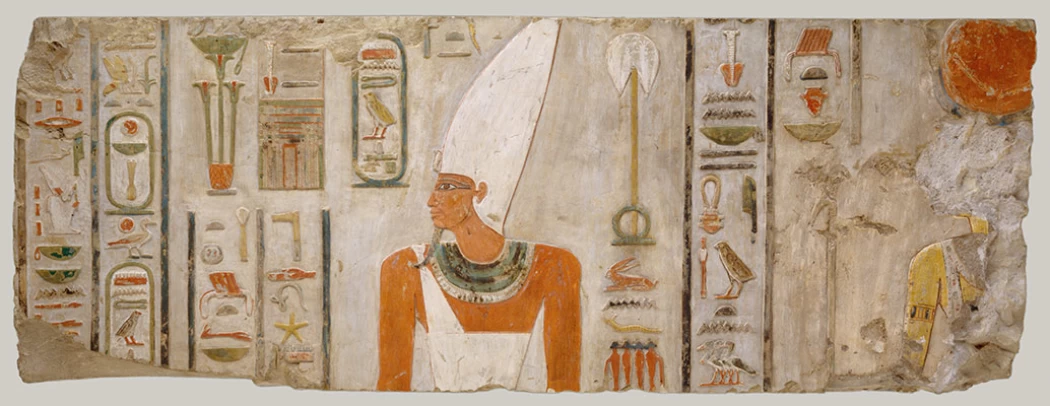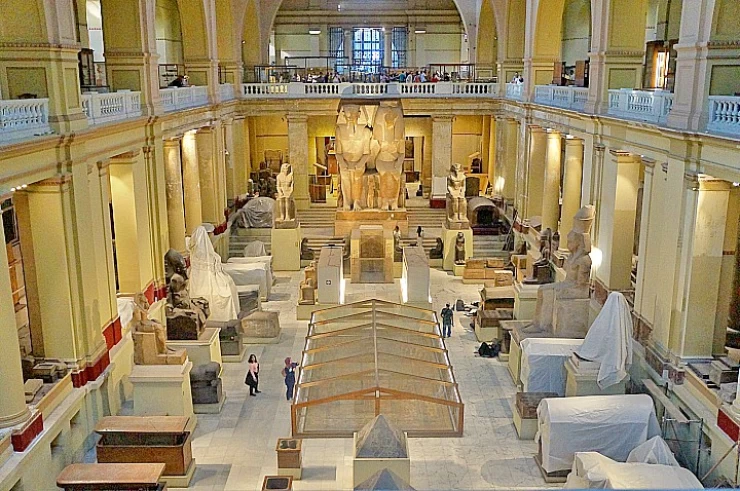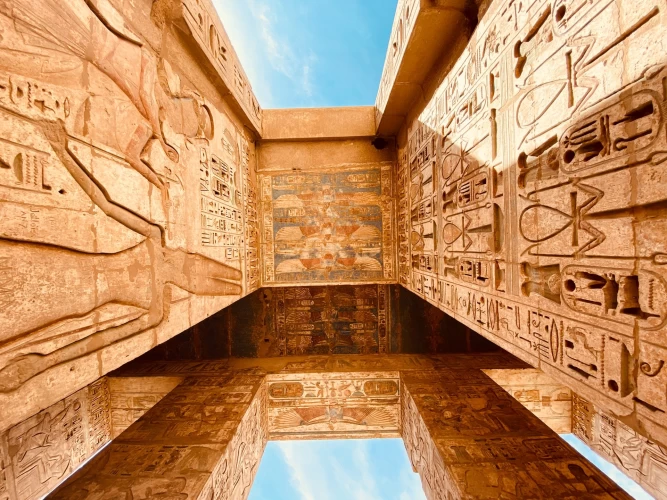
Kings and Rulers of Egypt | List of Famous Rulers of Egypt
Egypt from the Time of the Kings and Rulers: A Tour of Some of the Famous Rulers of Egypt, Inc.
Egypt is a country with a rich history worth understanding. It has surpassed the tenure of several rulers, kings, and queens, all of whose footprints capture the interest of the world. The rulers of Egypt have undergone civilizations ranging from the ancient pharaohs with the construction of the pyramids to the contemporary governments. Contrary to growing empires or cities containing only one ruler, nearly every ruler left—to some degree—traces their influence on different aspects, including religion, art, architecture, and society in general.
This article focuses on some of the most prominent kings and rulers of Egypt in the 5,000 years of the region’s history. Starting with the divine kings, we will look into the impact of the individual rulers on Egypt, including the later foreign imports.
1. Narmer (c. 3150 BC): The First Pharaoh of Unified Egypt
Narmer, who is also referred to as Menes, is considered to have been the first Pharaoh of Egypt who ruled over the territories of both Upper and Lower Egypt, thereby founding the first dynasty. This unification was also the beginning of ancient Egypt as we know it. Narmer’s reign is well illustrated on the Narmer Palette, which is a historical artifact illustrating his triumph over his foes and describes him as the Egyptian nation’s first state builder.
As the very first king to rule over a united Egypt, Narmer initiated a system of governance that would see the rise of dynasties for the next few centuries. He made Memphis the capital of Egypt and laid the groundwork for the emergence of a centralized monarchy for the next several centuries of Egyptian rule.
2. Djoser (c. 2667–2648 BC): The Visionary Behind the Step Pyramid
Djoser was a ruler of the Third Dynasty who is chiefly remembered for one turning point in history—the Step Pyramid at Saqqara. Designed by his architect Imhotep, this pyramid was the first solid stone structure to be erected anywhere and marked the beginning of the later-day pyramid structures of Giza. Djoser’s long reign transformed many aspects of architecture and culture in Egypt as it illustrated the power of the pharaoh vis-à-vis the development of technology in the country.
The Step Pyramid was an emblem of Djoser’s authority and his divine connection, establishing the concept of the divinity of kingship, which would reign over Egyptian governance for a long time.
3. Sneferu (c. 2613–2589 BC): The Pyramid Builder
The person who initiated the Fourth Dynasty was called Sneferu, and he is particularly well known for his building projects. This was not the only pyramid constructed during his reign, as three pyramids, including the Bent and Red Pyramids at Dahshur, were built. Such successful structural creation of a pyramid made possible the famous pyramids of Giza, which were created by his successors.
In addition to his immeasurable success, his achievements can cleave up economic stability. Sneferu also commanded construction works at different sites in the state. It was this monumental work that would serve to ensure the survival of his reign, and in his case, the pyramids would come to define the world’s greatest civilization.
4. Khufu (c. 2589–2566 BC): Builder of the Great Pyramid
Khufu, or Cheops as he is sometimes referred to, was the second pharaoh of the Fourth Dynasty, most famous for building the Great Pyramid of Giza. The Great Pyramid is the largest of the three pyramids that are located at Giza, and to the present time, it is an architectural wonder. There is very little information about Khufu’s reign; nevertheless, there is a recall of his pyramid, which shows the power he wielded and the material wealth at his disposal.
The Great Pyramid is a testimony to the great amount of workforce and resources used by any king or pharaoh and therefore helps in understanding the militaristic outlook of the king and the strong apparatus of governance that was able to organize such countries.
5. Hatshepsut (c. 1479–1458 BC): The Female Pharaoh Who Defied Tradition
Hatshepsut was an Egyptian pharaoh in the period known as the Eighteenth Dynasty. She remains one of the most distinguished female rulers in history. She is also regarded as one of the best pharaohs of Egypt, along with other long-serving pharaohs, not just because of the duration and success of her reign but because she ensured everyone accepted her as a ruler in a woman’s unbending zone. Hatshepsut was involved in trade and went on to construct beautiful buildings such as places of worship, which include her famous mortuary temple at Deir el-Bahari, and there were drought-free and abundant years that came after.
Hatshepsut's reign is notable for its development and diplomacy instead of war, and her person as a female ruler is very much revered even today.
6. Thutmose III (c. 1479–1425 BC): The Napoleon of Egypt
Thutmose III, a warrior pharaoh known for conquering many lands, is popularly referred to as the “Napoleon of Egypt.” However, as the ruler was known to be a ‘warrior king’, Egypt flourished during his reign more than ever before as its influence stretched to Syria and Nubia. Once more, Thutmose III occupies an important spot in Egypt’s chronology as one of the remarkable generals of the country. However, history remembers him as a warrior monarch with a few military victories, which managed to ensure Egypt’s status as one of the powers of the ancient world.
And that was not all there was to Thutmose III: this man was also an accomplished architect who commissioned the building of many temples and monuments throughout Egypt. His period was marked by the extreme goals of the Egyptian Empire.
7. Akhenaten (c. 1353–1336 BC): The Heretic Pharaoh
Ruling over ancient Egypt, one of the most discussed and enigmatic persons is Pharaoh Akhenaten. Primarily, he is known in history as the pharaoh who dismissed the ancient Egyptian polytheism, which his father strongly practiced, and who instead promoted, if not normalized, one form of religion—worshipping the Sun. Akhenaten also moved the capital of the country to a newly designed city, Akhetaten (modern Amarna), to alter the dominant religions and artistic practices within Egypt.
Considering that Akhenaten’s convictions had no realistic chance of permanently changing the social structure, the current administration did permanently alter the society and art of the Egyptians. Whenever he demised, the secular outlook that he held and even more so his son Tutankhamun quickly returned to that of the old Empire. This, however, is the unavoidable fact that Akhenaten’s monotheistic vision represented one of the astonishing phenomena in the development of this great civilization.
8. Tutankhamun (c. 1332–1323 BC): The Boy King
King Tutankhamun, or King Tut for short, was crowned pharaoh at a tender age and sat on the throne of Egypt for only about 10 years. Although his period of rule was rather short and unremarkable, it is the story of the discovery of his tomb by an archaeologist called Howard Carter in 1922 that made him one of the most widely known pharaohs in history. The untouched tomb full of rich items belonging to the young ruler of Egypt had stunned the entire world.
Although he ruled for a relatively brief period, the incredible items discovered in King Tut's tomb ensure that he will be remembered throughout history.
9. Ramses II (c. 1279–1213 BC): Ramses the Great
Ramses II, aka Ramses the Great, is the most powerful and renowned pharaoh of the New Kingdom. He ruled for 67 years, and there were massive building works, war activities, and an influence that would last in history for centuries. The military undertakings of Ramses II are well documented, foremost among them the Battle of Kadesh with the Hindu Empire, which led to one of the earliest known peace agreements in history.
Beyond warfare, Ramses II was a great builder. He built enormous statues, temples, and monuments such as those at Abu Simbel and the Ramesseum. His reign is usually regarded as the high point in terms of power and splendor of Egypt, and his name is forever associated with greatness in Egypt.
10. Cleopatra VII (c. 69–30 BC): The Last Pharaoh
The last Pharaoh of Egypt, Cleopatra VII, is a historical figure almost everyone knows for her brains, skills in leadership, and for having had relations with Julius Caesar and Mark Antony. Born into the Greek royal family that had been ruling Egypt since the time of Alexander the Great's conquests, known as the Ptolemaic dynasty, Cleopatra came to be known as the last Egyptian pharaoh.
During her reign, Cleopatra strived hard to maintain the autonomy of Egypt as the influence and power of Rome expanded around her. But, after being defeated by Octavian (who became known as Augustus) at the naval confrontation at Actium in 31 BC and following the dual demise of Cleopatra and Antony, Egypt was annexed and made into a province of Rome. Cleopatra’s image is perhaps that of the strongest and the most feminine, flourishing in death, and her existence has given birth to many novels, pictures, and plenty of other forms of art.
11. Muhammad Ali Pasha (1805–1848): The Founder of Modern Egypt
Some historians regard Muhammad Ali Pasha as the father of modern Egypt because he was an Ottoman governor who created a strong semi-independent dynasty that ruled over Egypt for close to a century and a half. Following his ascension to power, Muhammad Ali undertook massive reforms in the military, economic, and educational spheres in Egypt and helped in developing the country into a contemporary state.
He fought wars to add more territories to Egypt’s dominion and also aimed at making Egypt the hegemonic power in the region. The reforms of Muhammad Ali were the first steps in the modernization of Egypt and were effective far into the 20th century.
12. Gamal Abdel Nasser (1954–1970): The Revolutionary Leader
Born as a member of the Free Officers movement, which orchestrated the 1952 Egyptian coup d’etat, Gamal Abdel Nasser became the second president of Egypt and is remembered as one of the most prominent figures in the Arab world. Nasser appealed for a united Arab nation, assumed control over the Suez Canal in 1956, and focused on scrutinizing strategies geared towards overhauling Egypt’s economic and social structures.
In Nasser’s time, Egypt was at the vanguards of the Arab world, as was his active discouragement of external dependency and interference in Egyptian affairs. Nasser was the last person to see his leadership as a resurgence of Arabs. On the contrary, many theorists began worrying about the problems that would arise, including the Six-Day War in 1967, they remembered Nasser as an Arab, but for them as an example of problems of the Arabs.
13. Anwar Sadat (1970–1981): The Peacemaker
He took over responsibility from Gamal Abdel Nasser and reached beyond borders when it came to Egypt's political position. Without a doubt, the crowning glory of Sadat was bringing peace to the state of Israel, which action was captured through the 1979 Camp David Accords. This was the embracement of the peace treaty that His Excellency Jimmy Carter mediated, and that enabled Egypt to become the first country amongst the Arab nations to recognize and accept the state of Israel after centuries-old conflicts that existed between the two countries.
As the recipient of the Nobel Peace Prize, Sadat's pacification policy was put into practice through the controversial policy towards the Arab World, which many considered the peace agreement disrespectful towards the use of force created for the Palestinian people. Internally, he introduced an "Open Door" economic policy (Infitah) that aimed at liberalizing the economy of Egypt by enhancing foreign investments and private businesses in the nation. These economic changes, however, brought about social tensions, especially rising prices and inequalities.
The presidency of Sadat, then the President of Egypt, ended tragically in 1981 when, in a military parade in the capital city of Cairo, he was killed by Islamic militants. However, this violent end does not obscure his memory as a courageous leader who strove for peace and economic transformation both in Egypt and beyond.
14. Hosni Mubarak (1981–2011): Egypt’s Longest-Serving President
For almost three decades, Hosni Mubarak was the President of Egypt, and that made him the longest-serving ruler of the current Egyptian republic. His reign began with Vice President Mubarak having to take over Egypt after the assassination of Sadat, where he worked hard to enforce order and continued Egypt's ties with friendly nations, especially the United States of America. He was able to keep Egypt firmly tied to the US strategy in the Middle East, maintaining the peace agreement with Israel as well.
The present regime, in economic backwardness, came to a phase where assets were privatized and expansion registered, but this was however accompanied by corruption, unemployment, and a rise in the gap between rich and poor. Mubarak’s administration was indicted for intolerance towards opposition, restricting ethical principles of expression, and misusing laws to keep order. Finally, the combination of these elements, in addition to a frozen political situation and the general discontent with his regime, resulted in the Egyptian Revolution of 2011.
Throughout the Arab Spring, Egypt witnessed street protests by millions of citizens agitating for the resignation of Mubarak and political and economic reforms, social equality, and fighting against corruption. He resigned from the post of president of Egypt after 18 days of continuous protest organized against him through various means. That was February 11th, 2011, and thus came to an end the reign that had lasted for nearly thirty years. His abdication represented a watershed moment in contemporary Egypt, causing a wave of political turbulence and transformation.
15. Mohamed Morsi (2012–2013): Egypt’s First Democratically Elected President
Under political pressure from the streets, Mubarak resigned in early 2011, and Egypt went through a short phase of political transition before the election of President Mohamed Morsi in 2012. Morsi was from the Muslim Brotherhood, which made him the first Egyptian president elected through a democratic process. However, his presidency was characterized by extreme division and chaos.
Morsi's government encountered strong resistance from the secularists and liberals, as well as the armed forces, who claimed that he was seeking to monopolize authority and implement Islamist policies. His controversial announcement in November 2012 that he would assume even greater powers as leader sparked public demonstrations throughout the country. With the unrest worsening, the military of Egypt stepped in, and in July 2013, there occurred a coup that was headed by General Abdel Fattah el-Sisi, which led to Morsi being removed from power.
The presidency of Morsi, which lasted a short span, is considered in most sections of the history of Egypt after the revolution. This is about the concept of achieving peace within the country devoid of any conservancies or dictators while acknowledging the fact that the factors of politics, religion, and society are many and diverse in Egypt.
16. Abdel Fattah el-Sisi (2014–Present): Egypt’s Current Leader
Abdel Fattah el-Sisi held the ranks of the army's general and minister of defense before succeeding Mohamed Morsi as the president of Egypt. Again, in the year 2014, Sisi went ahead to try and win the Egyptian presidency, already relying on the support he had previously garnered. Most of the forces and political activities opposing Mubarak were without clear-cut positive impact of these circumstances, in most instances, for long periods. Ever since taking control of Egypt in 2013, the country under the leadership of Sisi has been described as relatively stable in as much as the turbulence that followed the 2011 revolution; however, his rule has also been marked with oppression of dissent and scant regard for rights.
Sisi's attention has been dedicated to the economic overhaul of Egypt through extensive infrastructural development, the most notable being the enlargement of the Suez Canal and the development of a new capital city located on the outskirts of Cairo. Additionally, he has implemented measures that are meant to bring the energy sector up to date, whereby a lot of resources have been allocated towards the extraction of gas as well as renewable energy initiatives.
Nevertheless, Sisi’s administration has drawn condemnation over its human rights policies and practices, with countless documented instances of political oppression, censorship, and the jailing of dissidents. Notwithstanding these setbacks, Sisi is still the most well-known face in Egypt's political scenery, and as such, his presidency underscores the continued petromonarchical regimes that have characterized Egypt in recent political history.

















